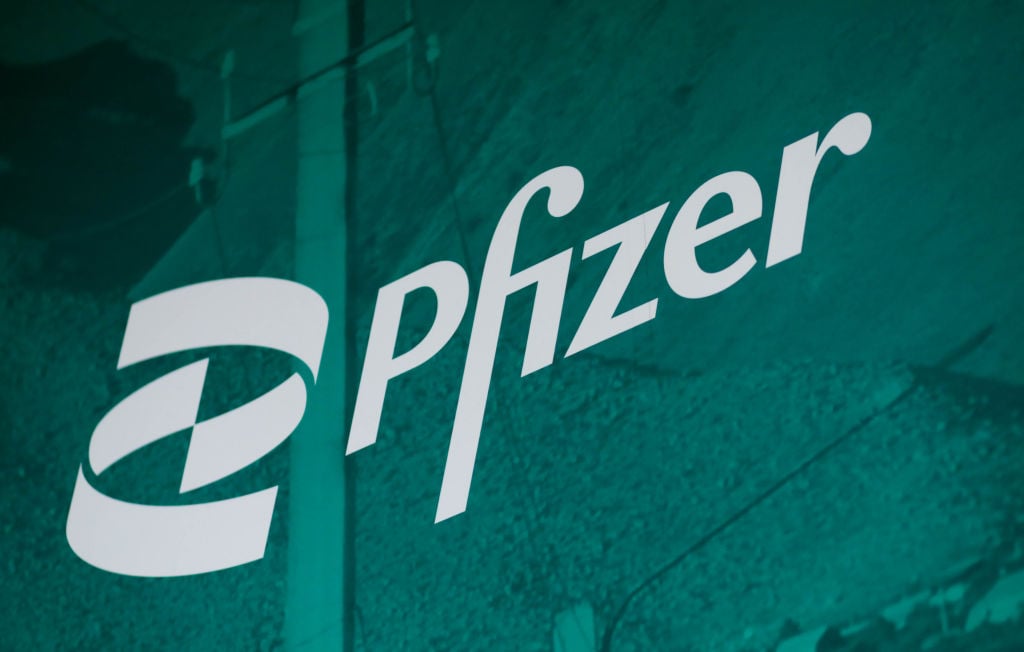A dividend cut is on the way for one of the biggest drugmakers in the world. But it's not because of the COVID-19 pandemic. It's not because of financial problems at all.
Pfizer (PFE +0.75%) will lower its dividend payout at some point later this year for a straightforward reason. The pharma giant plans to spin off its Upjohn unit and merge it with Mylan (MYL +0.00%). The transaction will form a new entity that will be known as Viatris.
But just how low will Pfizer's dividend go after the Mylan-Upjohn deal is finalized?

Image source: Getty Images.
Don't worry
Before we answer the key question, let me first reassure investors who rely on Pfizer's steady dividend payments coming in every quarter. You won't see your income reduced.
Pfizer shareholders will receive shares in Viatris, the new entity created by the merger of Upjohn and Mylan. Viatris should generate annual revenue of between $19 billion and $20 billion with free cash flow of more than $4 billion.
This last number is important because Viatris is expected to use around 25% of its free cash flow to fund a dividend program. The new company should initiate a dividend beginning in the first full quarter after the transaction closes. Although the COVID-19 pandemic has pushed back the anticipated closing date, Pfizer and Mylan still anticipate that the deal will be finalized in the second half of 2020.
The bottom line is that current Pfizer shareholders will continue to receive dividend payments from Pfizer and will also receive dividends from Viatris. Pfizer projects that the combination of these two dividends should be roughly equivalent to Pfizer's dividend payout in effect immediately before the closing of the merger.
A back-of-the-napkin calculation
But the fact remains that the "new" Pfizer's dividend will be lower than it is now. How much lower? Here's a back-of-the-napkin calculation.
Pfizer didn't report its cash flow in Q1. However, it did provide full-year guidance that projected cash flow in 2020 of between $10 billion and $11 billion for the "new" Pfizer. The midpoint of this range is around 17% lower than Pfizer's total cash flow in 2019.
Should we assume that Pfizer's dividend could also be around 17% lower after the Upjohn-Mylan deal wraps up? Not so fast. Pfizer's total revenue (with Upjohn included) is also expected to slip in 2020, which would negatively impact its cash flow.
Probably a better approach is to simply look at how much Pfizer pays out in dividends now. In the first quarter, the company reported $2.1 billion in dividend payments. Based on the projections for Viatris, the new entity should pay out quarterly dividends of around $250 million (25% of $4 billion in annual cash flow divided by four quarters).
If the combination of the "new" Pfizer's dividend and Viatris' dividend is going to be basically the same as the level of Pfizer's current dividend, we can expect the "new" Pfizer's quarterly dividend payout to be in the ballpark of $1.85 billion, or 88% of the current level backing out the estimated amount of Viatris' dividend payment. Using Pfizer's current share price, that would translate to a dividend yield of close to 3.6%, down from a little over 4% today.
Trade-offs
Why does it matter how much Pfizer will cut its dividend if Viatris will make up the difference? Some Pfizer shareholders might not want to hold onto their Viatris shares after the Upjohn-Mylan deal closes. There are both positive and negative trade-offs to consider.
The "new" Pfizer seems likely to deliver growth that's at the upper end of the growth levels for big pharma stocks. Viatris probably won't generate impressive growth in large part because of the headwinds from the loss of exclusivity for Lyrica. Some Pfizer shareholders might prefer to stick with the higher growth stock and part with the lower-growth one.
Of course, the downside to selling Viatris is the lower dividend payout. But based on the rough calculations already discussed, the "new" Pfizer's dividend won't be too much lower than the current dividend. The combination of a dividend yield that's still attractive plus better growth prospects should make the "new" Pfizer an even more attractive stock than the "old" Pfizer is.






